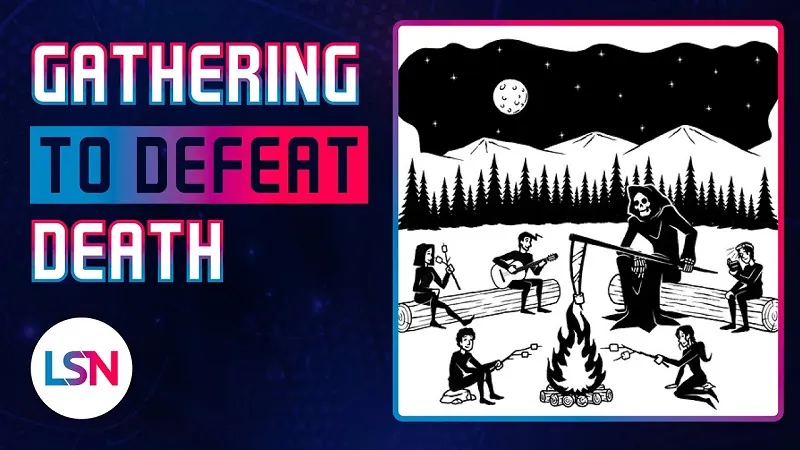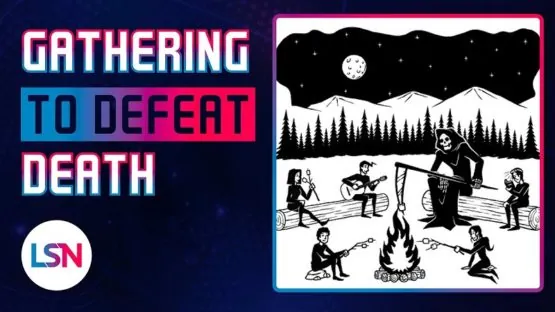Ryan O’Shea discusses the Longevity Summer Camp, a four-day retreat featuring people from many longevity-related walks of life, on this episode of Lifespan News.
Script
Recently, somewhere between the former gold mining town of Nevada City and the infamous Donner Pass, a unique gathering took place. Leading longevity experts and company builders convened with promising young minds and successful professionals in other fields, to discuss how we can work together to develop longevity tech and make it widely available. And as an attendee, I’ll give you some insight into who was there, what was discussed, and how you can get involved and make a difference!
This four-day event, dubbed the “Longevity Summer Camp,” featured intensive small-group workshops and breakout sessions led by subject matter experts. Examples include Reprogramming led by Jay Sarkar of Turn Biotechnologies, Brain Aging led by Christin Glorioso of NeuroAge Therapeutics, Damage Repair led by Matthew O’Connor of Cyclarity Therapeutics, and Genetic Medicine led by Matt Scholz of Oisin Biotech. And when they weren’t hosting their own sessions, they were participating in the workshops of others.
Also gathered were attendees from a wide variety of backgrounds and experiences. As you would expect, there were a number of people with expertise in biology and medicine, but there was also a large focus on computer science and machine learning, possibly in part due to the camp’s proximity to the Bay Area. Others came from the worlds of investment and company building, policy and advocacy, robotics and automation, and math and physics.
Most of the attendees came from North America, while others traveled from as far away as Indonesia.
With this diversity of viewpoints and experiences, the event sought to break down barriers and eliminate the silos that exist in many other industries. Something that needs to be understood, and that was reinforced during this event, is that, yes, there is a lot of money to be made in longevity technology, but there are things much more important than being first. Someone else making a scientific breakthrough that extends lifespan and healthspan is still in the best interest if you and those you care about. The sooner we can make these technologies available, the more lives we can improve and extend – and that is what is most important – so collaboration is key.
The retreat was put together by LessDeath, a new organization designed to support the growth and effectiveness of the longevity industry, largely by building pathways and systems to enable new people to enter the field and make a positive impact. Sponsors included OpenCures, VitaDAO, AgelessRX, and Lifespan.io.
Because of the physical limitations of the event location, and to preserve the impact of the workshops and small-group sessions, in-person attendance was capped and those who wished to attend had to apply and be selected. However, one of my goals of attending was to scale the impact of the event and help make sure that the benefits and knowledge gained spread beyond those who were there in person.
Something that was clearly expressed there is that everyone has a role to play in advancing longevity science and technology. Even if your background is not in biology, or computer science, or business, you have a place in this community. If nothing else, these organizations need your advocacy and support.
The importance of messaging, and having conversations with your friends and family, came up numerous times in the workshops. The science won’t really go anywhere unless the public, the business community, and governments are on board and enable that to happen. Getting that buy-in is crucial, and not having it would be a major roadblock that could end up costing lives.
Other roadblocks and bottlenecks were also identified, and new ideas were brainstormed.
- Among the topics that came up were:
- The fact that aging is not considered a disease, which could be addressed through lobbying and advocacy.
- The bandwidth limitations of those working in the field, which could be addressed through lab automation, simulation, and the use of digital twins.
- A focus on the precautionary principle rather than the proactionary principle, which could be addressed by drawing attention to the definite harm caused by inaction in addition to the possible harm caused by action.
- The cost of lab equipment and supplies, which could be addressed with a sharing or leasing program, or with DIY or hacked versions.
These would be great areas for people who wish to make an impact in longevity to get involved. The conversations that began in the forests of California at the Longevity Summer Camp are continuing, and I don’t imagine it will be long until the connections that were made and the seeds of ideas that were planted begin to bear fruit.
When there’s more to share, we’ll have it for you here, so please subscribe so you don’t miss out! I’m Ryan O’Shea, and we’ll see you next time on Lifespan News!




